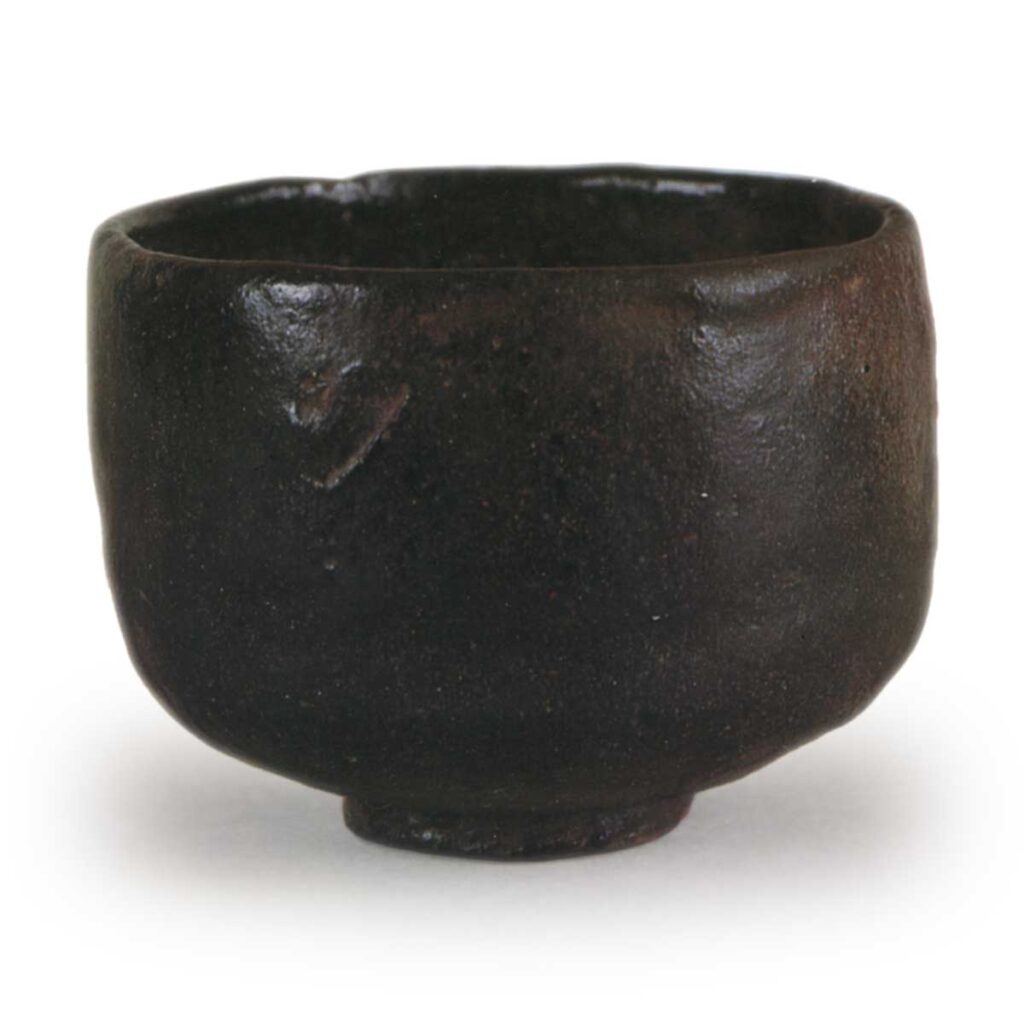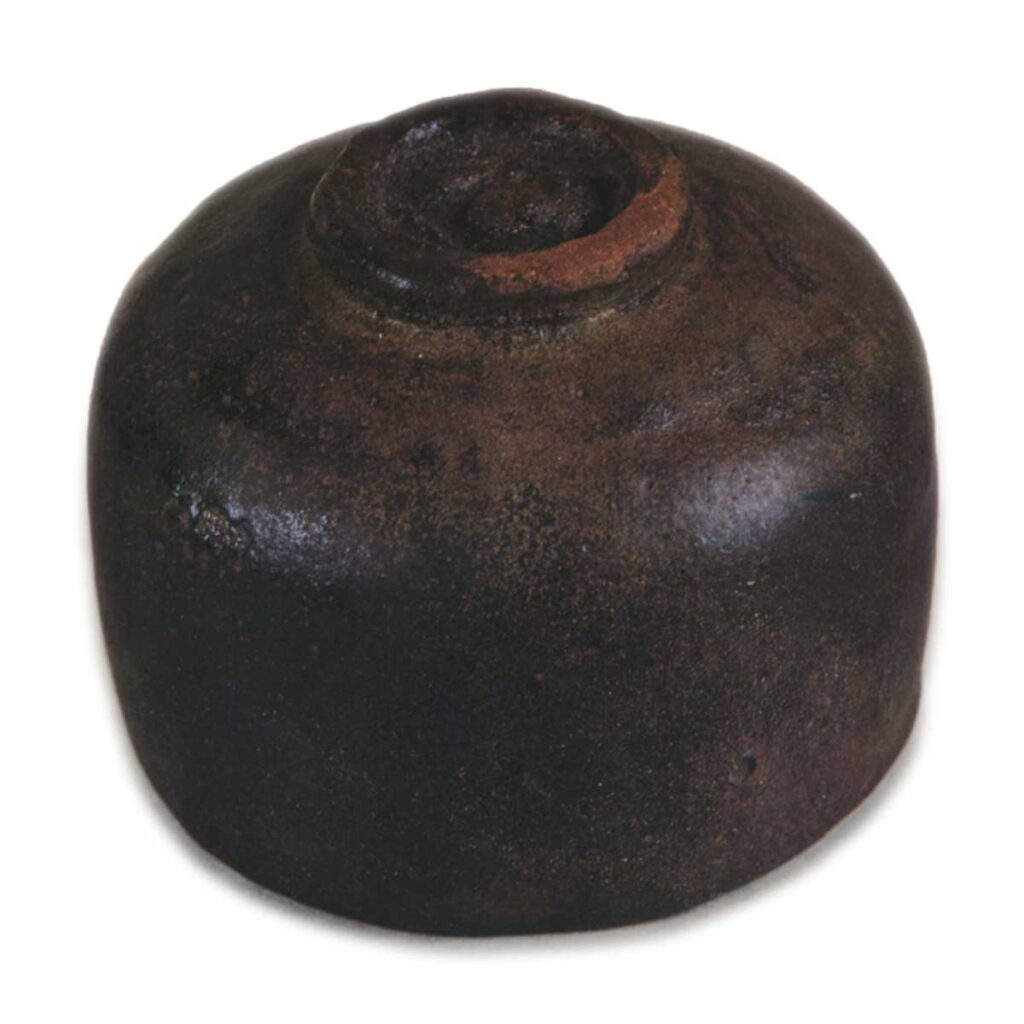

Chuko Meibutsu
Important Cultural Property
Height: 8.3-8.5cm
Mouth diameter: 10.8-11.2cm
Outer diameter of stand: 4.8cm
Height of the same: 0.6cm
On the front of the lid of the inner box, there is an inscription “Muichimono” written in ink by Kosomuro, or Sen Saso, but it is not clear whether this was Saso’s inscription or whether Saso wrote an earlier inscription on the box. The calm and stable appearance of this tea bowl is truly appropriate for the Zen term “Mu-Ichimono”.
It is a typical Rikyu’s tea bowl, probably produced in around Tensho 15, and is estimated to be an early Soyei-shaped Chojiro tea bowl.
The slightly inwardly inclined mouth, the plump body, and the curving surface from the waist to the base, which gently tapers off, are all completely without any technique.
The height of the stand is slightly smaller than the diameter of the bowl, and is also mildly carved, but the width of the helmet inside the stand, like that of Oguro, is clearly made in a small height in the shape of a whirlpool.
The reason why the bowl is unexpectedly heavy is because the bottom of the bowl is thicker, but it is not clear why it was made so thick. Oguro” is also quite thick, but in the case of this tea bowl, it is somewhat exceptional, or it seems as if the clay was added to the inner bottom after it had been scraped once. The clay used for the body is so-called “Jyuraku” clay mixed with fine sand, and has a strong reddish color.
The entire body was glazed with a transparent glaze, but the glaze was thin and the firing temperature was low, so that the glaze was almost completely left on the clay.
In particular, the interior of the vessel is completely stripped to reveal the red clay. However, the inside is relatively well preserved, and there are glaze puddles on the inside and outside of the base from the edge of the base, which also leave the glaze white.
About half of the bowls with tatami mats on the base are exposed, and unusually for Chojiro tea bowls, there are five clear marks on the bowls. Jirobo” is the closest in terms of both clay and glaze, but the style is slightly different.
The origin of this piece in the early Edo period is unknown, but it later came into the possession of Shimizu Fujitaro, a Kyoto sukiyaku (tea ceremony utensil merchant), and in the early Kyouwa period (early Edo period), through the agency of Takeya Chubei, a tool dealer, it seems to have entered the collection of Lord Matsudaira Fumai, and is recorded as Chojiro Akanashi Ichimono Kyouwa Takechu 500 ryo in the Chuko Meimono (Unshu Meimono) section. However, in the “Osaki-sama gozutsuyo gotezuke” (Osaki-sama gozutsuyo gotezuke), it is written “Muichimono kirihachi (Kiriya Hachizaemon) chuukyo (chuukyo meimono) 364 ryo,” or perhaps the description in the gotezuke is more accurate.
According to the “Record of Tea Ceremony of Lord Fumai,” he used this tea bowl for a tea ceremony in the winter of Kyowa 2, and the main combination of the tea bowl and the tea bowl is a tea bowl with a lingering taste, which shows the dignified taste that only Lord Fumai could have.
(The tea bowl has a unique dignity unique to the Lord of Fumai.)



